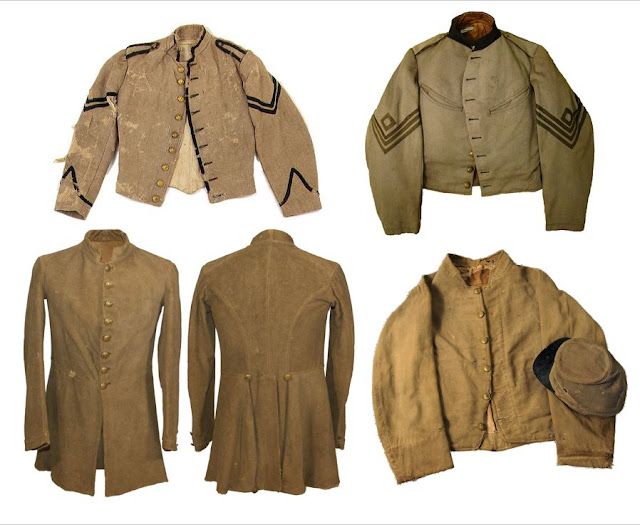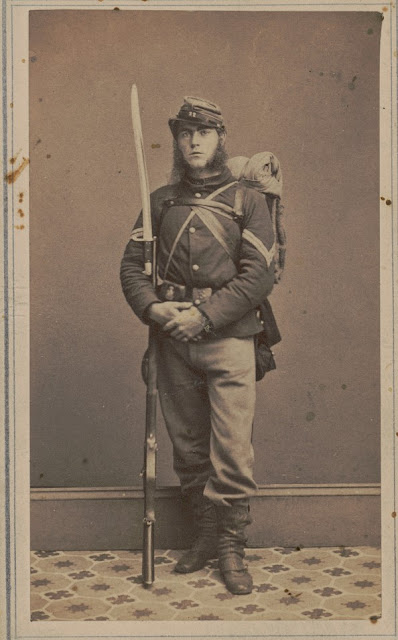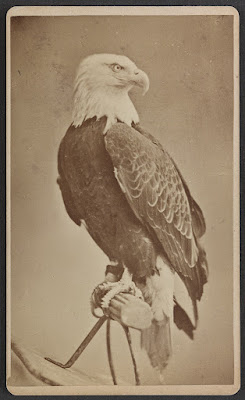Opening Gettysburg with the 3rd Indiana Cavalry
Riding into Gettysburg on June 30, 1863, one trooper of the 3rd Indiana Cavalry of Colonel William Gamble's brigade of Buford's cavalry division remembered how the townspeople greeted his regiment with cheers and songs.
"As we passed through the city, we were gladly welcomed by the inhabitants who flocked in numbers to behold the advance of our troops," he wrote. "The farther we advanced the denser the throng became and when about half the length of the street was passed, a large number of young ladies had congregated and greeted us with the soul-inspiring air, “The Star Spangled Banner.” Another square further and the “Red, White, and Blue” rang merrily from a hundred fair singers. Just as the termination of the street was reached, when every nerve was strained in preparation for the charge, hundreds of voices blended sweetly in their earnest tones and “The Union Forever” inspired the men to the highest degree of patriotism."
The following day, his regiment would be among the first units engaged in the Battle of Gettysburg. The following account of the first day’s fight was penned by a trooper in Co. D of the 3rd Indiana Cavalry, writing under the pen name of Eques. It first saw publication in the July 23, 1863, edition of the Aurora Journal.
Camp near
Westminster, Maryland
July 3, 1863
The report of the battle now in
progress at Gettysburg will be anxiously looked for by all and while the nation
watches with breathless interest, the part which the cavalry has taken in the
decisive blow will form an interesting topic with those who have friends and
relations serving in this branch of the service.
On Thursday June 25th we
left Aldie and marched to Leesburg where we encamped for the night and crossed
the Potomac on Friday at Edward’s Ferry. We continued our advance without
meeting the enemy until Tuesday when we drove in their pickets at Fairfield.
Then ascertaining from citizens that the town was occupied by a large force of
infantry, General John Buford deemed it imprudent to attack them and marched to
Emmetsburg and from there to Gettysburg, thus placing the command directly in
the rear of the enemy.
The Rebels, 2,000 strong with three
pieces of artillery, were reported to have formed their line of battle,
intending to dispute our advance. As we passed through the city, we were gladly
welcomed by the inhabitants who flocked in numbers to behold the advance of our
troops.
The farther we advanced the denser the throng became and when
about half the length of the street was passed, a large number of young ladies had
congregated and greeted us with the soul-inspiring air, “The Star Spangled
Banner.” Another square further and the “Red, White, and Blue” rang merrily
from a hundred fair singers. Just as the termination of the street was reached,
when every nerve was strained in preparation for the charge, hundreds of voices
blended sweetly in their earnest tones and “The Union Forever” inspired the men
to the highest degree of patriotism.
The corner was turned and all were disappointed to learn that
the traitors had fled without firing a shot. I say disappointed for all were
eager for the fray. We encamped about a mile and a quarter beyond the city. The
citizens flocked into camp while the boys eagerly flocked to the city. No
restrictions were placed on them and all passed the most pleasant evening they
had enjoyed since leaving Hoosier soil.
Morning came July 1st and with it the advance of
the Rebels. To understand more clearly the position, I will here say that 1st
and 11th Army Corps were camped four miles in the rear of General
Buford’s command. At 8 o’clock, the First Brigade composed of the 3rd
Indiana Cavalry, 8th Illinois Cavalry, and 8th New York
commanded by Colonel Gamble of the 8th Illinois formed in line of
battle and took up a position one-fourth of a mile in advance of our late camp.
 |
| The 3rd Indiana Cavalry monument at Gettysburg is located along Reynolds Avenue just to the north of the railroad cut. |
We had barely taken up the position when a division of the
enemy was thrown forward and three batteries opened upon us. The 8th
Illinois and 8th New York were thrown forward as skirmishers while
the 3rd Indiana supported our brigade battery. The Rebel batteries
were firing at shot range, the distance being less than half a mile, and their
firing was very accurate. Four of our guns were soon disabled and one was
dragged off by two cavalry horses. The two remaining guns continued to fire
steadily under a murderous crossfire for over an hour when they were compelled
to withdraw from a flanking fire of the enemy’s sharpshooters. In the meantime,
the infantry were rapidly advancing and it fell to the lot of our regiment to
employ them until the column came up.
We stood under the crossfire of 15 pieces of artillery for 10
minutes when the Federal infantry came in sight. We had just started off the
field when a shell burst just in front of our ranks which killed Jesse Smith
instantly. The shells flew thick and fast but the regiment slowly retired out
of range without further loss. Two of the boys dismounted and bore lamented Jesse’s
body off the field to the city and their made a coffin, but were forced to
report to the regiment before he could be buried. We had the assurance of the
cabinet maker Mr. Swope that he would see him buried and would mark his tomb so
that it could be found if desirable. Poor Jesse! All miss him so much.
During the fight on July 1st, Private Louis A. Tufts of Co. D witnessed the death of an intimate companion who was shot at his side. "While engaged in removing the body, his beloved General John Reynolds fell near him. The shock was too great for his mind and he became a raving maniac. He was removed to the insane department of the Philadelphia army hospital and every care taken of him but he died on the 14th of July." ~ Aurora Journal, July 30, 1863
Our forces were driven from their first position and to
protect their rear, our brigade was formed in their rear and gallantly stood
until the Rebel ranks again came in sight when we dismounted and as skirmishers
took position behind a stone wall. Our faithful Gallagher’s and Sharps carbines
checked the rapidity of the advance of a Rebel division and their advance was
somewhat retarded. Their ranks were seen to open when one fell but again
rapidly closed; their colors fell several times but were quickly grasped again.
At last, they had approached so near that to remain longer
was certain death or capture while there was a bare possibility of escaping by
retiring. This was the trying time of the day. There was a rush and all
succeeded in safely retreating save Augustus Wright who was seen to fall from
his horse, it is supposed he was severely wounded. Last reports, the truth of
which I will not vouch for, state that he was carried from the field and placed
in the sanitary hospital. Our regiment surgeon Dr. Beck is attending upon our
wounded and when he returns, we will know to a certainty.
During the day’s engagement, 6,000 Rebel prisoners were
captured while our loss was less than 1,000 in prisoners. Three of our guns
were captured but two of these were recaptured by the 19th Indiana
who had the honor of bringing off an entire regiment prisoners with officers
and colors. Our company’s loss is as follows: Jesse Smith, killed by a fragment
of a shell; Sergeant Omer Howerton wounded slightly in the arm; Corporal
Benjamin Sellers slightly in the side and leg by a shell; Franklin Powers,
severely in the knee by a musket ball; William Tupper, slightly in the left leg
by his horse falling upon him; and Augustus Wright, nature of the wound
unknown. [Wright was killed July 1, 1863.]
The loss of the regiment, including a detachment of the 12th
Illinois, totaled 56 in killed, wounded, and missing. The brigade lost 202, the
loss of the horses very near the same. When we compare the relative strength of
the forces we can only wonder that our force was not annihilated. Our forces
numbered less than 15,000 while the prisoners stated their number actually
engaged to be 50,000.
While we sincerely mourn the loss of our fallen comrades and deeply sympathize with their afflicted families, we give them the assurance that as brave soldiers they lived and as true patriots they died. We trust their spirits have passed to those regions of bliss where sorrows and sufferings are no more.
Respectfully,
Eques
Source:
Letter from
Eques, Co. D, 3rd Indiana Volunteer Cavalry, Aurora Journal
(Indiana), July 23, 1863, pg. 1
Article about Louis A. Tufts, Aurora Journal (Indiana), July 30, 1863, pg. 3












Comments
Post a Comment